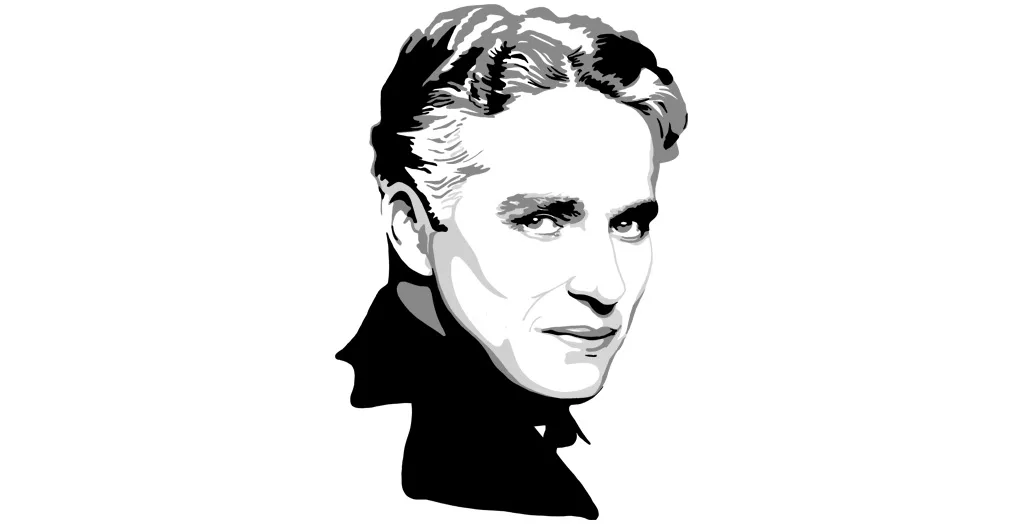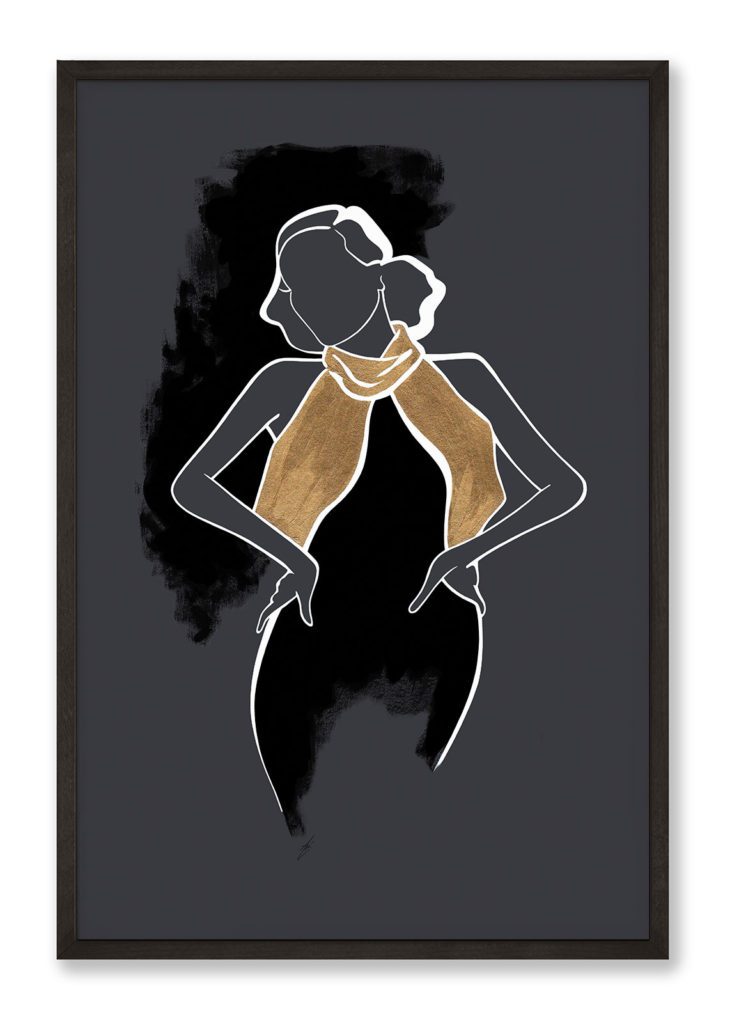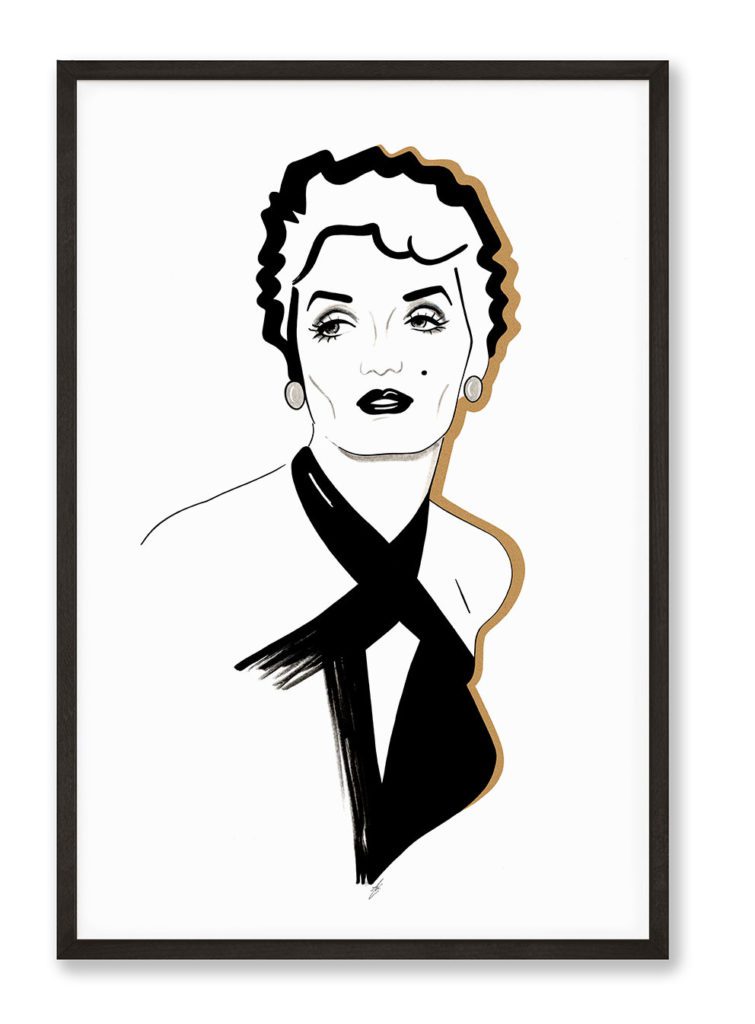Cary Grant
The suave gentleman with the best timing in Hollywood history




Hi, I'm Kat!
What I am most passionate about is to inspire you to see that your life is your own and biggest masterpiece.
Cary Grant is not only the number two on the American Film Institute’s list of male stars of the Golden Age of Hollywood – he is also the epitome of style and charm on screen. For me, personally, he was my first screen crush. And I admit I would still fall for him – in his suit, with his debonaire smile and aristocratic posture. But digging into his story reveals that this is not who he always was.
“He’s a completely made-up character and I’m playing a part,” Grant would explain. “It’s a part I’ve been playing a long time, but no way am I really Cary Grant. A friend told me once, ‘I always wanted to be Cary Grant.’ And I said, ‘So did I.'”
LISTEN TO THE PODCAST
SUBSCRIBE TO THE PODCAST
The beginnings of Archie Leach
Cary Grant was actually born Archibald Alex Leach on January 18, 1904 in Bristol, England.
He had an older brother, John William Elias Leach, but he died one day before his first birthday of tuberculous meningitis.
His childhood was very sad – or as his ex-wife Ryan Cannon would say: „He had such a traumatic childhood – it was horrible, just horrendous.“
His father worked as a presser at a clothes’s factory, his father was a seamstress. Both had problems – his father was an alcoholic, and his mother, who never forgave herself for the death of her firstborn, blamed herself, suffered from severe clinical depression and smothered young Archie without really knowing how to give or receive love and affection. This actually would have a lasting negative impact on his relationship with women.
Nevertheless, she thought him song and dance from the age of four and took him to the cinema sometimes, even though money was very short and the family was poor. There it was that little Archie learned to love the great ones of the time – like Charlie Chaplin, Fatty Arbuckle, Mack Swain and Broncho Billy Anderson.
When Archie was nine years old, his father put his mother into a mental institution – but that was not what he told his son. He told Archie that his mother had gone away on a long holiday and two years later he told him that his mother had died. It was only 20 years later, on his father’s deathbed that he learned the truth and that his mother was still alive.
School and "The Penders“
Young with only his father, Archie got fascinated by the theater, particularly pantomime and befriended a acrobatic dancers that were called „The Penders“. He joined them once he had become a skilled stilt walker and toured the country and even the continent with them. Apparently, Jesse Lasky, famous Paramount producer saw him performing in Berlin in 1914 – when Archie was only 11 years old.
In 1915, Archie received a scholarship to attend Grammar School – although they were so poor that even paying for the school uniform was a challenge for his father. Archie was quite bright and capable in most academic subjects, but exceeded in sports – he was intelligent, athletic, slender, new acrobatics and tricks… and was a little bit mischievous. He definitely must have been a ladies’ man even back then. He often refused doing his homework, interrupt classes and annoy teachers.
Rather than studying for school, he helped in the local Bristol theaters, learning quickly the ins and outs of the trade and became the primary lightning expert when magician David Decant toured Bristol in 1917 – Archie was only 13 years of age. He hung around the backstage area and did the odd jobs. To escape his unhappy home and to earn money. One year later, he was expelled from his school. He was accused of assisting in theft and being in the girls’ lavatory. Some assume that he wanted to get expelled. Because only a short 3 days after he rejoined „The Penders“. As his father had received a better-paying job in Southhampton, but 14-year old Archie wanted to stay in Bristol with the theatre troupe, father Leach signed a 3-year-contract with his son and the Penders that included Archie’s salary, room board dancing lesson and training for this profession until he was 18 years of age. And so his performing career really began.
Vaudeville and the theatre
„The Penders“ toured the country and even went to the US in 1920. Apparently, Archie took the same boat, the RMS Olympic, that Mary Pickford and Douglas Fairbanks when they returned from their honeymoon.
Upon arrival, the Penders performed in the New York Hippodrome, the largest theatre in the whole world back then, holding a capacity of 5697 people. The performance ran for 9 months with 12 shows each week. Then, they started the vaudeville circuit touring the US. When most members of the Penders returned to Britain, Archie and some of his co-performers decided to stay in the US.
The next years were his trying years. Archie tried a lot – he formed two different performing groups, toured the United States with them, starred in a variety show. became a paid escort for famed opera singer Lucrezia Bori, was a walking sandwich board on stilts on Coney Island and performed in the National Vaudeville Artists Club in New York. Overall, he developed a lot of artistic and performing skills, comic timing, doing sketches, juggling, performing acrobatics, and riding a unicycle.
And then, the theatre came along, he was cast in a musical called „Golden Dawn“ in 1927, when he was 23 years old. So, that was seven years since his arrival in the US. He was put under contract, receiving a weekly salary but this as well as the following production were unsuccessful and his contract was sold to the Shubert Brothers, the family who established the Broadway district. His co-star later said that Archie had been terrible in his role but was so charming that people loved it nevertheless – the play ran for 72 shows. For three years, he did several productions until his contract with the Shubert Brothers was ended because he refused to accept a pay cut due to the Depression hitting the economy. All in all, Archie Leach was seen as a very promising young actor and performer that brought something new to the stage and the movies. So, naturally he did not have to wait long – he was scooped up by William B. Friedlander to star in a play with Fay Wray which let to a screen test for the movies.
The birth of Cary Grant
Archie Leach met with Jesse Lasky and BP Schulberg from Paramount and signed a 5-year-contract at a starting salary of 450$ a week (which today would be around $8k. Schulberg wanted though that he changed his name to something more American – and thus Archie Leach became Cary Grant!
He started starring in movies with the great ones of the time – his first movie was opposite Thelma Todd and Lili Damity, the wife of Errol Flynn. His next movie was already „Blonde Venus“ opposite Marlene Dietrich and directed by Josef von Starnberg. Subsequently he starred opposite Sylvia Sidney, Tallulah Bankhead, Gary Cooper, Charles Laughton, Nancy Caroolland Randolph Scott and Mryna Loy. None of these films made him a star, but established him as one of the rising actors to stardom.
In 1933, Grant was chosen by Mae West to star in the pre-code movies She Done Him Wrong ad I’m No Angel. These movies were hugely successful, She Done Him Wrong was even named as one of the best comedy films of the 1930s. The next movies though were financial disasters although most of them were praised by critics. When his contract ended, Grant decided not to renew it but to freelance instead – actually, Cary Grant claimed to be the first freelance actor in Hollywood. Since the first movies bombed, he agreed to sign an joint contract with RKO and Columbia, which allowed him to choose the stories that he felt suited his acting style. It was a four-film 2-year contract – guaranteeing him $250k income.
Hollywood Rise to Stardom
In 1937, at 33 years of age, Cary Grant did „When You’re in Love“ and was praised by critics, Mae Tinee even writing „the best thing he’s done in a long time“. „Topper“ was another success, a screwball comedy, in which Grant played a ghost alongside on-screen wife Constance Bennett and „The Awful Truth“ opposite Irene Dunne. And this movie was the movie started what film critic Benjamin Schwarz called „The most spectacular run ever for an actor in American pictures“.
His next movies most people who love Old Hollywood will know: Bringing up Baby and Holiday opposite Katherine Hepburn, military movie Gunga Din opposite Douglas Fairbanks, „Only Angels have wings“ opposite Jean Arthur and Rita Hayworth and „In Name Only“ opposite Carole Lombard, „His Girl Friday“ with Rosalind Russell, „My Favorite Wive“ again with Irene Dunne and The Philadelphia Story with Katherine Hepburn and Jess Steward.
Although we know Cary Grant as this great charmer and suave gentleman, apparently he was really good at more mysterious roles. Hitchcock cast him for the first time in „Suspicion“ and Geoff Andrew describes this as „a supreme example of Grant’s ability to be simultaneously charming and sinister.“ „The Talk of the Town“, „Once Upon a Honeymoon“, „Mr. Lucky“ and „Destination Tokyo“ followed. It was a rigorous filming schedule with Destination Tokyo being shot in under six weeks.
In 1944, Grant starred in Arsenic and Lace, which is one of my favorite comedies ever – because of Grant. All others are just decorum to make his star shine, I feel. And I am quite happy that Bob Hope, who was offered the script beforehand, declined.
„Notorious“ alongside Ingrid Bergman, his great comedy „The Bachelor and the Bobby-Soxer“ with Myrna Loy and Shirley Temple, „The Bishop’s Wife“ with David Niven And Loretta Young, „Mr. Blandings Builds HIs Dream House“ and „Every Girls Should be Married“ followed and made him the fourth most popular film star at the box office in 1948.
His popular movie „I Was a Male War Bride“ in 1949 became the highest-grossing movie of the year and made Grant one of the highest paid actors, demanding $300k per movie. This movie was a battle though – he did not only appeared dressed as a woman with a wig and a skirt, but also fell ill with hepatitis and lost a significant amount of weight, thus making his appearance in the movie change.
Success
The next five years were kind of a slump – his roles were not fitting anymore, they were neither critically acclaimed nor liked by the public much. This changed in 1955, when Grant was cast a third time by Hitchcock for the movie „To Catch a Thief“ opposite Grace Kelly.
Going on his own again, Grant being one of the most demanded actors of the time, decided which movies he would appear in, chose directors and co-stars, and negotiated a share of the gross revenue – very uncommon at that time. He actually received $700k for his 10% of the gross of „To Catch a Thief“ – to compare: Hitchcock received only $50k for directing and producing it.
His lead roles in 1957s „An Affair to Remember“ alongside Deborah Kerr, „The Pride and Passion“ and „Houseboat“ opposite Sophia Loren as well as „Indiscreet“ with Bergman cemented his success in romantic movies.
Two of his most successful movies came in 1959 – North by Northwest, his fourth pairing with Alfred Hitchcock and according to The New York Times, he handled the role „with professional aplomb and grace“ as well as Operation Petticoat alongside Tony Curtis – who on another occasion for Some like it hot, spoofed Cary Grant. Operation Petticoat was the height of Cary Grant’s talent for comedy – not with words but by his demeanor, his reactions, his facial expressions. And it probably was Grant’s most successful and highest earning film, bringing in $9.5 million.
A movie that I personally enjoyed very much and that Grant apparently had a great time playing in was The Grass is Greener with Deborah Kerr, Robert Mitchum and Jean Simmons. But, it was smashed by critics – but for those that want an additional incentive for watching it apart from Cary Grant OF COURSE: Jean Simmons is divine in this movie, beautiful, funny, nonchalant while sporting the latest Dior fashions. Definitely a must watch. Although I must admit the story really drags on a bit.
His movie That Touch of Mink was one of the movies that I actually started watching because of Doris Day, but I enjoyed Cary Grant in it nevertheless. This movie is especially great for its dresses and the makeover scenes.
Some of his last movies include Charade with Audrey Hepburn, which is another masterpiece of his, Father Goose, which is a complete 180 degree turn from his usual persona, he was playing a coast watcher on an uninhibited island. And his very last film was Walk, Don’t Run that really was not good at all.
Actually, Alfred R. Broccoli originally wanted Cary Grant to play James Bond, but couldn’t sign him on as Grant only wanted to be committed to one movie and not a whole series. That’s why they had to search further and find Sean Connery in the end.
Retirement
Cary Grant retired in 1966, because he felt the „Golden Age“ of Hollywood was over and he was not interested in any more roles. Instead, he wanted to help raise his daughter Jennifer that he had when he was 62 years old.
He got great offers to return to the screen but did not accept any of them. Instead, in his last years, he would tour the US with a one man show called „A Conversation with Cary Grant“ – he would show clips from his films and answer questions. He admitted to this as „ego-fodder“.
On November 29, 1986, when he was preparing for one of these shows, Cary Grant felt unwell – when a doctor came, it became clear that Grant had a massive stroke. He would not let them call an ambulance and only when he slipped into a coma, they rushed him to the emergency room, later to intensive care. He died hours later at age 82.
Cary Grant’s Style
His Accent was transatlantic or mid-Atlantic, it blended British and American. It probably was the result of being English and having moved to the US, touring to many music halls and cities, hearing and emulating so many local dialects. He made it his own, on purpose and blended Cockney with American accents – absolutely extraordinary. Sometimes though he was mistaken for an Australian. Which led to his first role in the musical Golden Dawn as an Australian.
Apart from his accent, his looks were another remarkable feature of his. His style role model was Douglas Fairbanks that he had met on his voyage to the US. Edith Head, one of the greatest costume designers of Old Hollywood, like Cary Grant the best and said that he had the greatest fashion sense any actor she had ever worked with. He was meticulous and considered every detail in his appearance. He worked hard to become the „epitome of masculine glamour“ as McCann would phrase it.
His charm and magic resulted from his genuine charm and his negligence of his own handsomeness. He acted and put in the work as if he was just an average man.
Cary Grant actually invented Cary Grant – how we would behave, what he would say, how he would move. As director Stanley Donen put it – his charm and magic was because of the enormous amounts of work that Grant put into creating himself. And Grant actually liked to poke fun at himself in statements such as „Everybody wants to be Cary Grant – even I want to be Cary Grant“.
Archie Leach who had come from very humble beginning had created the star Cary Grant and had conquered the hearts of the world. Nevertheless, he never relied on his looks and his appearance, and liked to play the basic man.
Cary Grant the Businessman
Although we predominantly know Cary Grant as an handsome, charming gentleman on-screen, he actually was a very savvy businessman. His biographer Martin Stirling refers to him as „one of the shrewdest businessmen ever to operate in Hollywood“. The beginnings of this were friendships with just the right people.
On the one hand Howard Hughes who helped Grant get in touch with the right people, gave him the right tips, pointed him towards the right business ventures. On the other hand, there was Randolph Scott, a long-time friend and roommate of Grant in Hollywood, who advised Grant on investing in the stock market. So, basically, by the end of the 1930s, in addition to his great screen success, Grant was already very wealthy.
In addition to this, Grant and then wife Barbara Hutton, together with Richard Widmark, Roy Rogers and Red Skelton bought a hotel in Acapulco before it was the tourist destination that it would become. He had houses in Beverly Hills, Malibu and Palm Springs that he lived in.
Naturally, he had the millions from the movie business that he got with the percentage of the gross net income from the movies as well.
But if you thought that this man would sit down and enjoy his wealth after retiring, you’d be wrong. Yes, he did stop acting, but he did not stop working.
He got a position on the board of directors at Fabergé – which was definitely not just a honorary position, but a true job that required him to travel and to attend meetings – and he is credited to have made Fabergé the successful international brand that it would become.
He was also appointed director of MGM and sat on the board of MGM Films and MGM Grand Hotels respectively. He was heavily involved in the MGM Grand Hotel in Las Vegas and promoted the city for an extended time. But he also sat on the boards of Western Airlines, The Academy of Magical Arts, as well as the Hollywood Park
He was a very busy businessman indeed.
Private Life, Love and Relationships
Grant found it difficult to form relationships with women. Although he was a handsome man and was always surrounded by the most attractive women, he never knew how to communicate with them.
Nevertheless, he had multiple affairs – with actress Phyllis Brooks, Betty Hensel, Sophie Loren, Cynthia Bouron, photojournalist Maureen Donaldson and Victoria Morgan.
All in all he was married five times.
First to fellow actress Virgina Cherrill that ended in a scandalous divorce, when Cherrill accused Grant of drinking too much and hitting her. The publicity surrounding the divorce threatened his public image.
Marriage number 2 was to the wealthiest woman in the world back then: Heiress to the Woolworth estate, Barbara Hutton. They were nicknamed „Cash and Cary“. After three years of marriage, they divorced and Grant did not demand a single dollar from his ex-wife.
Wife number 3 was Betsy Drake, also an actress – the marriage lasted for 13 years.
Marriage number two was to Dyan Cannon and produced daughter Jennifer Grant in 1966. To the millennial amongst us: You might remember Dyan Cannon as Whipper in the successful series „Ally McBeal“. The pair divorced two years later. And in 1981, Grant married PR agent Barbara Harris, who was 47 years his junior. Prince Rainier of Monaco, husband of Grant’s close friend Grace Kelly said about this time that Grant had „never been happier“ than during the years with Harris.
Grant maintained great friendships not only with the prince and princess of Monaco, but also with Audrey Hepburn and – as daughter Jennifer Grant notes – with people from all walks of life. Frank and Barbara Sinatra, Quincy Jones, Gregory and Veronique Peck and Johnny Carson.
One of his closest friendships was with fellow actor Randolph Scott. These two actually were roommates for 12 years. Which obviously led to the rumour that they conducted a homosexual relationship, which was denied by both Cary Grant himself as well as by his daughter Jennifer. Nevertheless, there have been rumors and accounts by at least two other men that say they have had sexual relationships with the two of them. We don’t know and probably we should not know. They definitely were a handsome couple in a wonderful house. What else do we need to know?
Legacy
Cary Grant’s biographer call him the „Greatest leading man Hollywood had ever known“. Stanley Donen and Howard Hawks, two of the most influential Hollywood directors call him the „greatest and most important actor in the history of cinema“.
He was also one of the greatest personalities of Old Hollywood, swooning girls and women all over the world with his talent for comedy, his great looks and his glamorous appearance. Not a muscular hunk, but an intelligent, good-looking man with great manners and a great sense of humor. A mix that can make any woman’s knees weak.
With all my love!
xx






